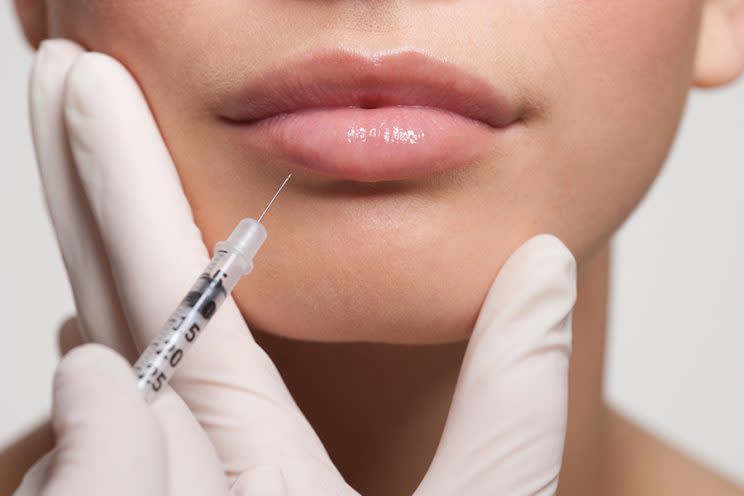New Study Determines the Difference Between a Good and Bad Lip Enhancement

An over-plumped pucker is so 2016.
In an April 2017 study, medical researchers teamed up to determine how much lip filler is too much for patients seeking lip augmentation — a cosmetic procedure that adds volume to the lips through surgery or injections. While full and well-defined lips impart a sense of youth, health, attractiveness, and sensuality, over-treated lips look, well, fake.
A total of 98 volunteers (76 females and 22 men) were shown photographs of a female model’s lips that were digitally altered incrementally in five sets of features — the upper lip, lower lip, upper and lower lips, and shape of the Cupid’s bow.
The participants viewed these pictures in random order and were instructed to answer a series of questions via an online survey. They were prompted to respond whether each altered photograph of the lips appeared to have received any cosmetic treatment, and whether the lips looked attractive and natural or artificial and unnatural.
Here are a few of the findings, which were published in the journal JAMA Facial Plastic Surgery:
50 percent of observers responded that the lips appeared treated if the ratio of lower to upper lips was either less than 0.92 or greater than 1.48.
50 percent of the volunteers perceived that the lips appeared artificial if the ratio of lower to upper lips was either less than 0.85 or greater than 1.
The key to achieving an attractive and natural lip enhancement is to perform a balanced augmentation of the upper and lower lips.
This isn’t the only investigation regarding the criteria for obtaining the perfect pucker. Earlier this year, a study published in the same journal concluded that the lips deemed the most beautiful had a 53.5 percent increase in surface area from the original image, with a 1:2 ratio of upper to lower lip that made up about 10 percent of the lower third of the face.
“The bottom line, as this current study shows, is that the center portion of the face — the lips, the eyes, the nose – are the most determining features of the face in terms of facial recognition,” Daniel Y. Maman, MD, a board-certified plastic surgeon who practices in New York City, tells Yahoo Beauty. “Your eye really hones in on the center of the face — and the lips being an important part of that — so any alteration to any of those components becomes extremely obvious, almost immediately.”
The Harvard-trained doctor explains that “duck lips” are formed when people are overcorrecting lips, “meaning they’re going larger than what a normal lip boundary would normally be — the Kardashians being an example of that,” he states.
The study author notes that one of the main challenges for clinicians is to know when to stop treating the lips before the results appear artificial and unnatural. Maman says that before he begins filling a patient’s lips, he examines their pout, from both a profile and a front view, to assess the relationship between the upper and lower lips.
“Often times, patients aren’t necessarily deficient in both lips — they’re usually deficient in one lip versus the other,” continues Maman. “And what I’ll do is augment the one that’s deficient in a very natural, subtle way.”
Norman M. Rowe, MD, a board-certified plastic surgeon in New York City, also agrees with these findings and emphasizes that less is more when it comes to this cosmetic procedure.
“No matter the reason for wanting lip augmentation, start out with a minimal enhancement,” Rowe states. “It is always easier to add more than to reduce over-enhanced lips.”
Maman stresses the importance of entrusting your precious pout to a qualified professional.
“It’s the same advice I give anybody going for any type of fillers or Botox equivalent: There are many providers doing it today — dentists, podiatrists, periodontists, dermatologists, gynecologists, family practitioners — so be careful about who you choose,” he says. “In fact, more than 90 percent of these fillers are done by non-plastic surgeons or non-dermatology practitioners.”
Maman advises that the person holding the needle should be board certified in his or her specialty, “and that they have experience with facial fillers and have an aesthetic eye.” He adds: “Just because you go to your primary care doctor and they happen to have an injector on the premises doesn’t mean they understand lip anatomy and how lip projection, etc., correlates with the other features of the face.”
Read more from Yahoo Style + Beauty:
Follow us on Instagram, Facebook, and Pinterest for nonstop inspiration delivered fresh to your feed, every day. For Twitter updates, please follow @YahooStyle and @YahooBeauty.

